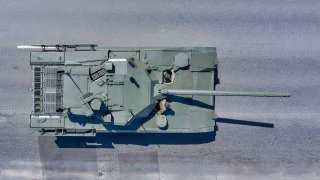High Russian Casualties and Ukrainian Gains: The Kursk Oblast Offensive
The Ukrainian military's advance into Russia's Kursk Oblast is forcing the Russian military to redirect forces from Ukraine to defend its territory. Ukrainian ground forces and fighter jets are making significant gains, with airstrikes targeting Russian infrastructure and command centers.
Summary and Key Points: The Ukrainian military's advance into Russia's Kursk Oblast is forcing the Russian military to redirect forces from Ukraine to defend its territory. Ukrainian ground forces and fighter jets are making significant gains, with airstrikes targeting Russian infrastructure and command centers.
-The Russian military, short on well-trained units, is deploying inadequately prepared formations, such as those from the Russian Aerospace Forces, to counter the Ukrainian offensive.
-This reallocation of personnel highlights Russia's ongoing struggle with high casualty rates and limited capability to effectively respond to the Ukrainian incursion.
Ukraine's Kursk Invasion Has Russia on Edge
The Ukrainian foray into Russia continues to net significant gains, reshaping the conflict with every passing day.
The Ukrainian military is fighting in Russia’s Kursk Oblast with ground forces and fighter jets. Kyiv’s progress is forcing the Russian military to relocate forces from Ukraine back to Russia to deal with the threat.
Fighting Inside Russia
Ukrainian units have operated with great impunity within Russia, and Russian military leadership is becoming increasingly anxious about Ukrainian advances in Kursk Oblast. Images circulating online show Russian troops digging trenches around the Kursk Nuclear Power Plant near Kurchatov. The facility is located approximately 50 miles from the border with Ukraine.
“After initial disarray and disorganization, Russian forces have deployed in greater force to the region, including likely from elsewhere along the contact line. They have also begun to construct additional defensive positions in an effort to prevent Ukrainian advances,” British Military Intelligence assessed last week.
Meanwhile in the skies, the Ukrainian Air Force flies sorties over Russian territory, striking targets with unusual ease. In an example of this air campaign, a video surfaced showing a Ukrainian MiG-29 Fulcrum dropping a French guided munition with a bunker-busting warhead through the roof of a Russian command and control bunker somewhere close to the frontlines in Kursk. In another instance, a Ukrainian fighter jet uses a pair of U.S. glide munitions to destroy a granary facility held by the Russians. Ukrainian missiles have destroyed several bridges in Kursk in an attempt to trap Russian units and prevent reinforcements from coming in.
The Russian military is short on capable, well-trained units to deploy. As a result, it is sending newly organized formations that are ill-suited to fight the battle-hardened Ukrainian mechanized brigades spearheading the foray into Kursk.
The Specialized Motor Rifle Regiment is one example of a unit deployed by the Russian military that is not fit for the task. Formed in May, the unit is comprised of Russian Aerospace Forces (VKS) personnel.
“Reportedly personnel forming the VKS-manned Motor Rifle Regiment include those previously in specialist roles such as early-warning radar operators at Long Range Aviation Heavy Bomber regiments,” British Military Intelligence stated in its latest assessment of the war.
“Diverting personnel from these previously high priority areas likely demonstrates continuing personnel shortages. By employing them in an infantry role, hey are also being misused, which could reduce Russian capability to re-take territory in Kursk Oblast,” British Military Intelligence added.
This is like the U.S. Air Force sending a battalion of F-22 Raptor maintainers and drone pilots to do the job of a U.S. Marine Corps infantry battalion.
“Russia continues to develop new units and recruit more personnel to sustain its mass attritional warfare approach against Ukraine,” British Military Intelligence added.
According to the latest estimates released by the Ukrainian Ministry of Defense, the Russian military has lost over 600,000 men, averaging more than 1,000 casualties a day.
“The high casualty rates that result mean that Russia needs to continuously replenish front line infantry personnel, which will almost certainly continue to limit Russia’s ability to generate higher capability units,” British Military Intelligence concluded.
About the Author:
Stavros Atlamazoglou is a seasoned defense journalist specializing in special operations and a Hellenic Army veteran (national service with the 575th Marine Battalion and Army HQ). He holds a BA from the Johns Hopkins University and an MA from the Johns Hopkins’ School of Advanced International Studies (SAIS). His work has been featured in Business Insider, Sandboxx, and SOFREP.
Image Credit: Creative Commons.


